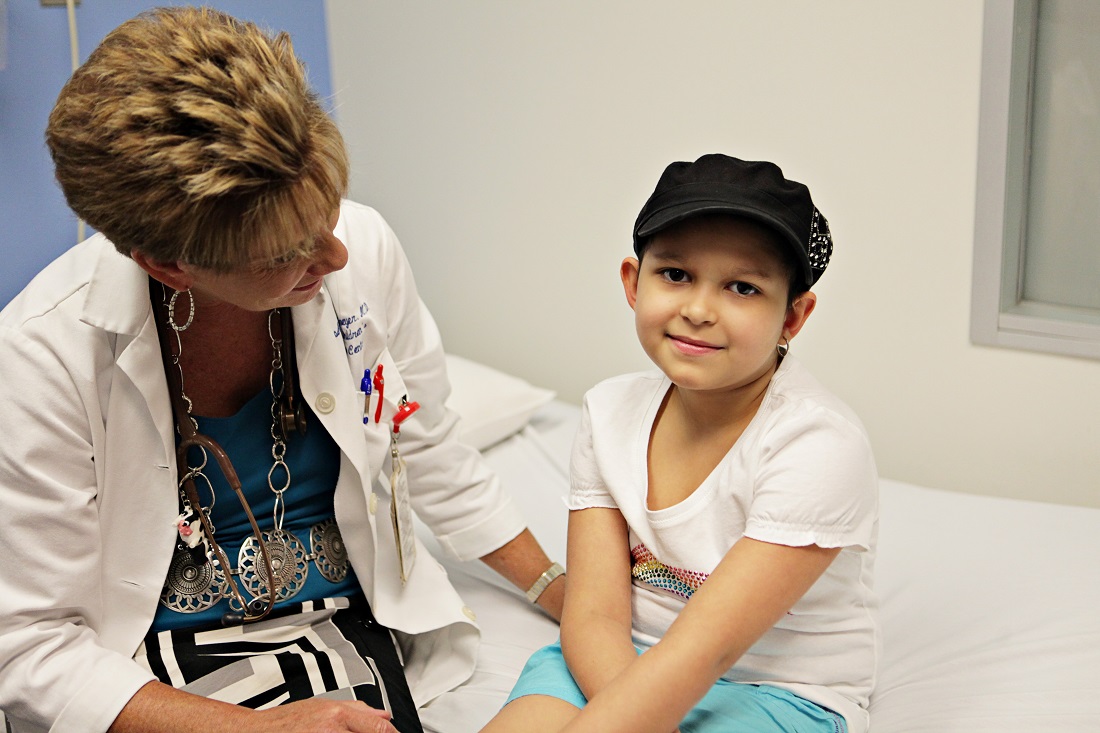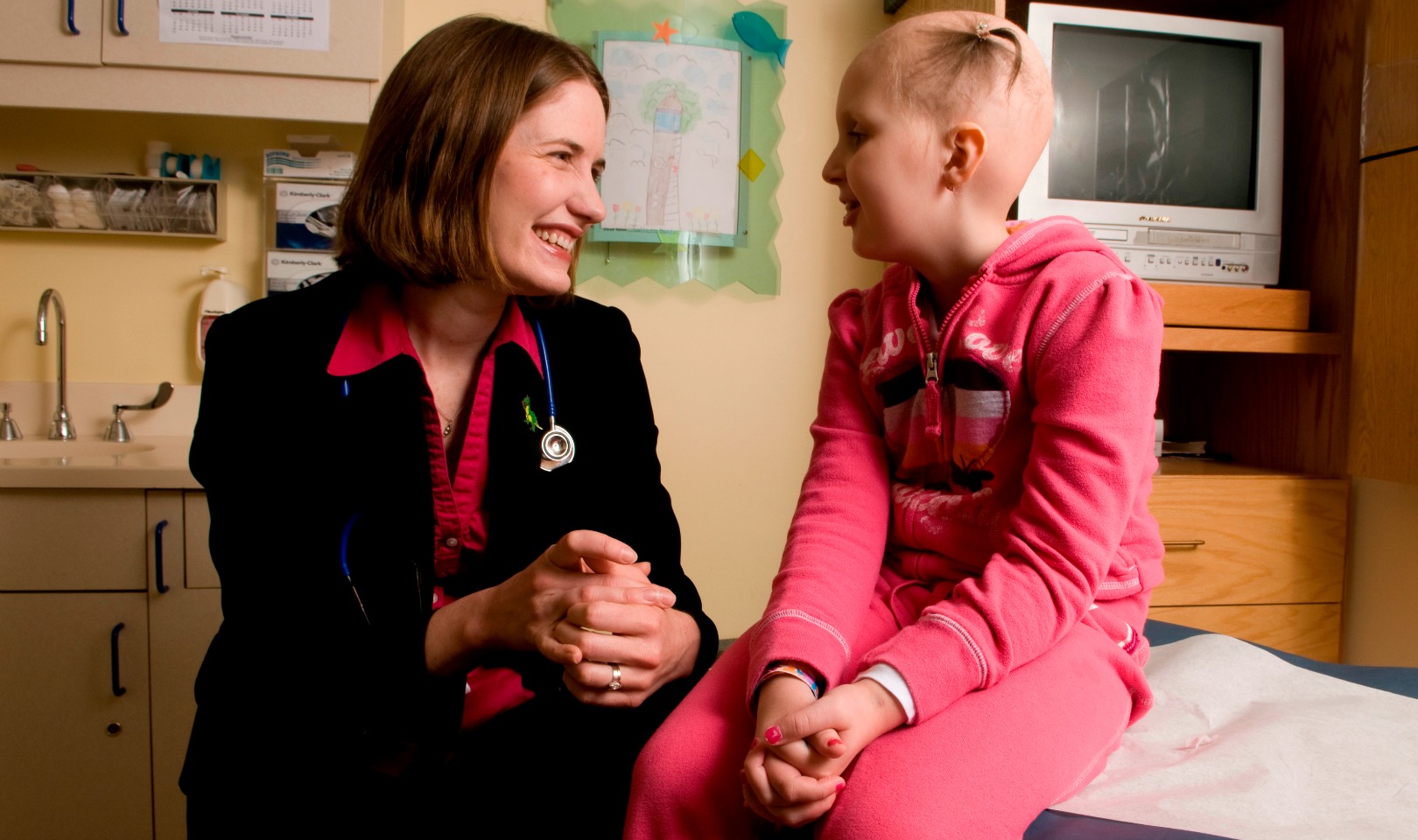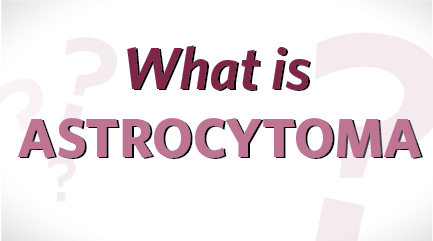What is Atypical Teratoid Rhabdoid Tumor (AT/RT)?
Dr. Lulla is a St. Baldrick’s researcher studying brain tumors in children. He explains AT/RT symptoms, treatment options, and how research is helping kids with AT/RT.

AT/RT is formally called atypical teratoid rhabdoid tumor. It’s an extremely rare type of brain tumor that mainly affects children under age 3. Occasionally, older children can be diagnosed with AT/RT.
Curing Childhood Cancer in the 21st Century: It’s Time for a Kid-centric Approach
Kids are not simply small adults. They need targeted research for targeted cures. You can help — speak up for kids with cancer today.

Lionel Chow, M.D., Ph.D., is a St. Baldrick’s Scholar studying high-grade gliomas, a particularly aggressive and deadly class of brain tumors in children.
Over the past four decades, we have seen dramatic gains in long-term survival and cure rates in nearly all forms of childhood cancer. Thanks to the collaborative spirit of pediatric oncologists across the world and the invaluable participation of pediatric patients in clinical trials, the five-year survival rate for all childhood cancers combined currently sits at about 80%.
Despite these advances, cancer remains the leading cause of non-accidental death in children and adolescents in the United States. Even more disconcerting is the fact that all childhood cancers receive less than 4% of the total amount of research funding from the National Cancer Institute.
While the FDA has approved 88 new drugs to treat adult cancers since January 2000, only three have been approved for use in the pediatric age group. This rather thin record of drug development for pediatric cancers underscores that the driving force for drug discovery in the pharmaceutical industry is the larger market potential of common adult cancers.
But more importantly, these numbers hint at the fundamental differences that exist between childhood and adult cancers.
The Road to Success: Clinical Trials and the Children’s Oncology Group
The Children’s Oncology Group, or COG, has done some pretty awesome things to change the face of childhood cancer. The St. Baldrick’s Foundation has granted over $46 million to the COG so that kids with cancer can get the cures they need.

It’s been said that the Children’s Oncology Group, or COG, is arguably the National Cancer Institute’s best success story. The COG’s clinical trials have increased the overall cure rate for childhood cancers from under 10% 50 years ago to over 80% today.
This is a road to success, but there are many miles to go before every child can be cured.
Adult Cancer vs. Pediatric Cancer: The Difference Starts on Day One
Did you know that pediatric cancers are different than adult cancers? The St. Baldrick’s Foundation does one thing: fund pediatric cancer research. You can, too.

St. Baldrick’s Scholar, Dr. Kris Ann Schultz, talking with a childhood cancer patient.
St. Baldrick’s Scholar, Kris Ann Schultz, M.D., M.S., has given the Day One talk. She studies rare childhood tumors at the Children’s Hospitals and Clinics of Minnesota.
“Whether a child has been sick for a day, a week, or a year, it’s a talk no parent is really prepared to have,” said Dr. Schultz.
But as difficult as that first conversation can be, Dr. Schultz is inspired by the way many parents are able to step forward and ask important questions.
What Is Astrocytoma?

We asked Dr. Jean Mulcahy Levy, a St. Baldrick’s Scholar, about astrocytoma, a type of childhood cancer. Read her explanation of astrocytoma symptoms, treatment options, and research opportunities.
What is astrocytoma?
Astrocytoma is a type of tumor that can happen in the brain or spinal cord. They are one of the most common brain tumors seen in children, with approximately 700 children diagnosed with low-grade astrocytoma — a slow-growing tumor — each year.
Childhood Cancer Research Funding and the State of the Fight Against Kids’ Cancer [INFOGRAPHIC]

by Dr. Robert Arceci, M.D., Ph.D., King Fahd Professor of Pediatric Oncology, co-director of the Michael J. Garil Leukemia Survivor’s Program at Johns Hopkins University School of Medicine and chair of the St. Baldrick’s Foundation Scientific Advisory Committee.
In my perfect world, I imagine a day when a child comes to my office with a cancer diagnosis and I can prescribe a 10-day course of medicine, just like amoxacillin for strep throat, and he or she is cured.
What Is High-Grade Glioma?

What is high-grade glioma?
High-grade gliomas are a diverse group of tumors of the brain and spinal cord that occur in children of all ages. This type of childhood cancer grows rapidly and has the ability to spread through brain tissue aggressively, making it very difficult to treat.
High-grade gliomas are classified by their location and by the appearance of the tumor under microscopic examination. This classification helps to assign a prognosis for the patient, but overall prognosis is poor for all types of high-grade gliomas.
18 Million Cancer Survivors Expected in 2022
Today, nearly 14 million people in the U.S. are cancer survivors and that number is expected to soar to 18 million in just 10 years.
A new report by the American Cancer Society, in collaboration with the National Cancer Institute (NCI), shows that this dramatic increase is due to the earlier diagnosis and better treatment of some of the most common cancers.
What Is MIBG Therapy?

Current treatment options including chemotherapy, surgery, radiation therapy, and stem cell transplantation are powerful, but not powerful enough. New therapeutic options are needed.
Childhood Cancer Research Funding Gap Widens

In 2011, research grant funding from the national level reached the lowest point in history, with only 4% of all federal cancer research funding dedicated to childhood cancer research. Even the slightest decrease in funding has great impact.
The National Institute of Health (NIH) reported that grant success rates, the percentage of reviewed applications that receive funding, is now at 18%. ScienceInsider states that “the new low reflects the fact that in 2011, Congress cut 1% from NIH’s $31 billion budget – only the second reduction since 1970.” The highest grant success rate was 32% in 1999-2003. Although many of the grant applications offered promising research opportunities, budget cuts continue to limit the overall amount of research that the NIH can support. As a result, research that could lead to improved cancer survival rates and treatment advances will be delayed or never reach its full potential.
« Newer Posts

 SBF
Tweets »
SBF
Tweets »